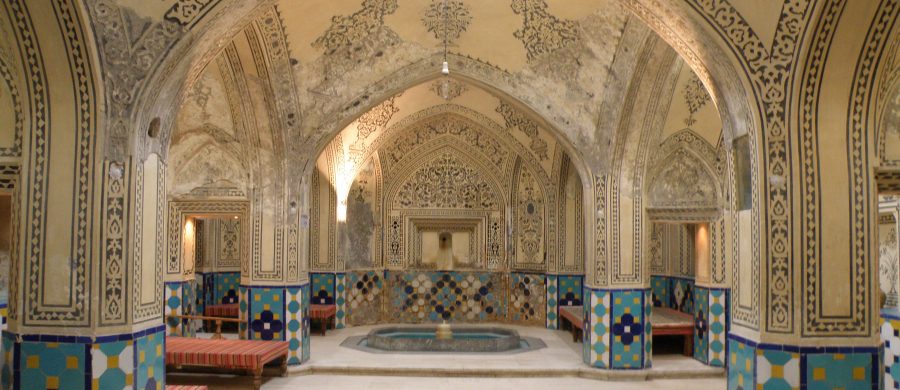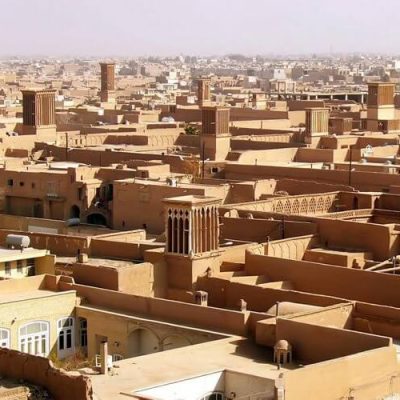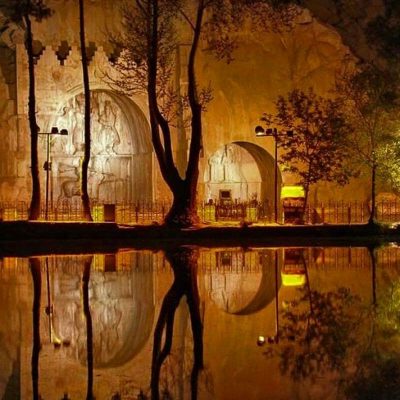Among Iranians, there are many legends about the creator of the first bathroom. Some have attributed it to Jamshid, the Pishdadi King and some to Solomon. But what is certain is that there is no specific scientific evidence from the founder of the first bathroom.
Iranian people have long known water and washing sacred and taking bath was common among them. Early bathrooms were natural hot springs, which have many health benefits. Then, during different periods, there have been a need for building public and private bathrooms to have permanent access to it. In Persepolis, there was found remains of private bathrooms having special bathing tools. And evidence suggests that there were public bathrooms in such a period. There are some documents from Sassanid era which show that priests have rejected the construction of public baths and had considered it an insult to their religion because, ordinary people, in class system of Sassanid era, in many cases had no right to use facilities that had been reserved for the upper classes.
After the advent of Islam, constructing baths expanded because cleaning is strongly advised in this religion. The baths were built in different periods with different decorations and architecture; however, having a closer inspection, some common features can be found.
For example, the construction of baths was based on four main natures mentioned in ancient medicine and the ancients believed that the balance between the four natures guarantees human’s health. The natures are wet, dry, warm, and cold.
Therefore, the physical structures of baths were divided into three main parts:
1: First House: this part of the bathroom that was located at the entrance is Srbynh, dressing room, or cold room. According to traditional medicine, the mood of this part is cold and dry equivalent to Yellow bile and autumn. After entering the bathroom, the person undresses and hangs his clothes on the wall. In this way, his first encountering with the bathroom is not so hot that his body is shooked and not so cold like outside. This means that he slowly comes into the warmer parts and coordinates his body.Srbynh space is often octagonal with domed roof and circular windows named Jam Khaneh. The Jam Khaneh’s glasses directly shed sunlight into the inner space and make the possible infection and disease in the first room neutral.
2: Second house: This part of the baths is called Miyan Dar (middle door) and is equivalent of Phlegm and cold and wet natures. The steam rose from the Garm Khaneh (warm room) enters into some parts of the Miyan Dar and makes the area wet. But it also has the coldness of Srbynh in itself. Usually, this area of a bathroom is longer and tortuous because it has the responsibility of transition from the coldest to the warmest point and the body must be coordinated with this temperature change.
3: Third House: It’s called Garm Khaneh (warm room) and is equivalent of blood nature and hot and wet mood. This is the main part of the bathroom and a place to wash the body. Normally, this area contains the Khazineh (bathtubs) of hot water and cold water. The temperature of water in bathtubs went up with a torch beneath them. Floors and walls in the area were usually made of materials strong and resistant to heat and humidity. Ceilings were high and domed with large windows toward outside. These windows provide the passage for direct sunlight and water disinfection in the bathtubs. Using natural light for disinfection was an importance to such extent that the bathrooms were closed after sunset and opened after sunrise.
Iranator offers you Iran visa services for visiting Iran. Stay with us …
Then, each person returning from the bathroom once again passed through the same route and prepared his body for outside temperature. Therefore, the risk of getting cold is low and health is guaranteed.
The bathrooms in past communities had beyond-local significance. Many important business meetings and matchmakings as well as events such as wedding showers or childbirth showers were held in these places. Many men and women circulated neighborhood news in this place. Even major political events such as the murder of Amir Kabir occurred in a bathroom and a large number of tourists visit Fin Bathroom and Garden every year because of their curiosity about this mysterious murder and not because of specific architecture of the bathroom.









Post Discussion